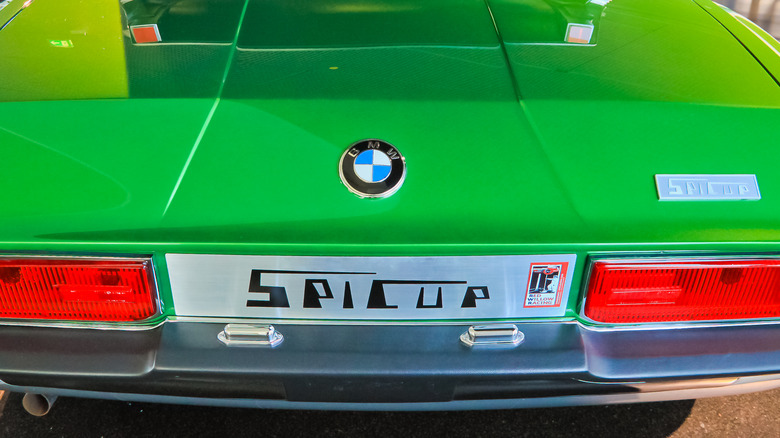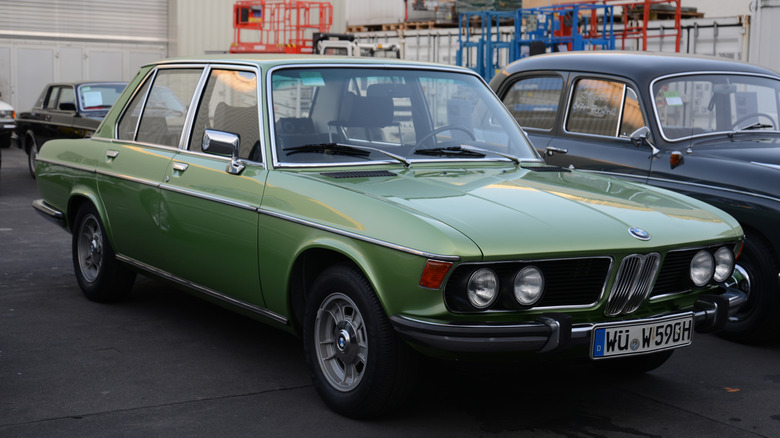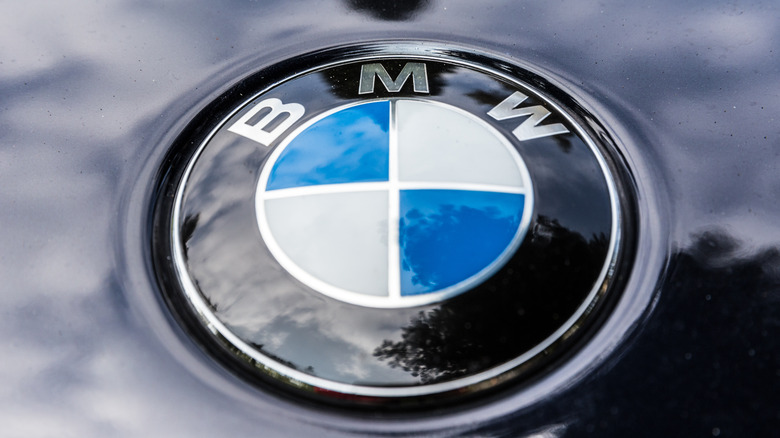The Forgotten BMW Concept That Ended Up As Someone's Daily Driver
It's not very often you come across a classic '60s BMW and have no idea what it is you're looking at. Often seen as the generation that laid the groundwork during the '70s that helped BMW stave off bankruptcy, there isn't a lot that can be said about the history of BMW that isn't already common knowledge amongst Beamer enthusiasts.
That is, except for the 2800 Bertone Spicup, of course. A joint production between BMW and Italian design house Bertone, the two would develop this one-off concept car in 1969, Car Throttle reports. Making its debut at the Geneva Motor Show the same year, the car would go on an international tour of auto shows, ending with the Frankfurt Motor Show.
Unfortunately, BMW would never put the Spicup into production, and it all but disappeared until it was found on display at a German exotic car dealer in the mid-1970s, according to Bonhams. But that wasn't the end of the road for the beautiful Beamer — quite far from it — thanks to the eventual owner, who cherished the car and used it for its intended purpose: driving.
Part Alfa, part Lamborghini, all BMW
Having previously worked together to bring Giorgetto Giugiaro's 3200CS coupe to life, BMW and Bertone shared a close relationship well before the arrival of the Spicup. This relationship allowed Bertone to feel confident BMW would want to work together to debut engineer Enzo Cingolani's newly developed version of a retractable roof. According to Bonhams (linked above), this retractable roof became the focal point of the concept car they called the 2800 Bertone Spicup.
An amalgam of the words "spider" and "coupe," the Spicup was based on BMW's E3 saloon (pictured above), rather than the E9 chassis the Spicup shared a namesake with. Arriving at Bertone with a 2.8L straight-six engine under the hood, the Spicup's roof retracted the steel panels into the roll bar. Like the Spicup, Cingolani's roof concept never made it to production. However, as Bonhams notes, it did heavily influence the Targa-top Fiat X1/9 that Bertone would design in 1982.
After Giugiaro's departure from Bertone in the middle of production, the task was handed to incoming chief designer Marcello Gandini. Helping the car cross the finish line, Gandini's stamp on the 2800 Bertone Spicup came in the form of his signature part-hidden headlights design — as seen in the 1972 Lamborghini Jarama and the 1974 Alfa Romeo Montreal.
This is what happened to the Spicup
According to Car Throttle and confirmed by Auto Bild, the 2800 Bertone Spicup presumably went into storage in the '80s, only to appear again in 2008 after a full restoration under its new owner. The process itself proved to be a lengthy one, as it took more than 2,000 hours over six months to complete the ground-up restoration of the Spicup. That included having to rebuild most of the parts from scratch, according to Bonhams — it is a one-of-a-kind build, after all, which means that acquiring replacement parts was essentially impossible.
Once completed and returned to the green exterior color the Spicup was created with, the car made its debut at the Italian Concorso d'Eléganza Villa d'Esta in 2009. It would be sold just two years later for nearly half a million Euros and is currently a fixture at the BMW Museum in Munich (via Car Throttle).


